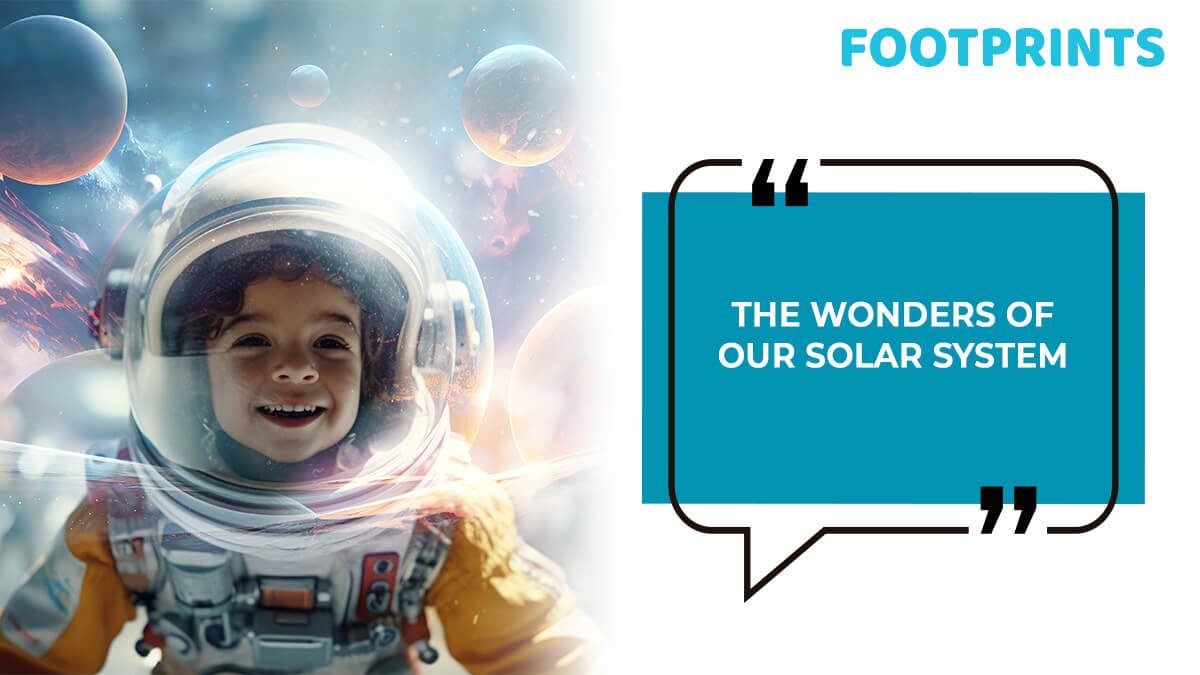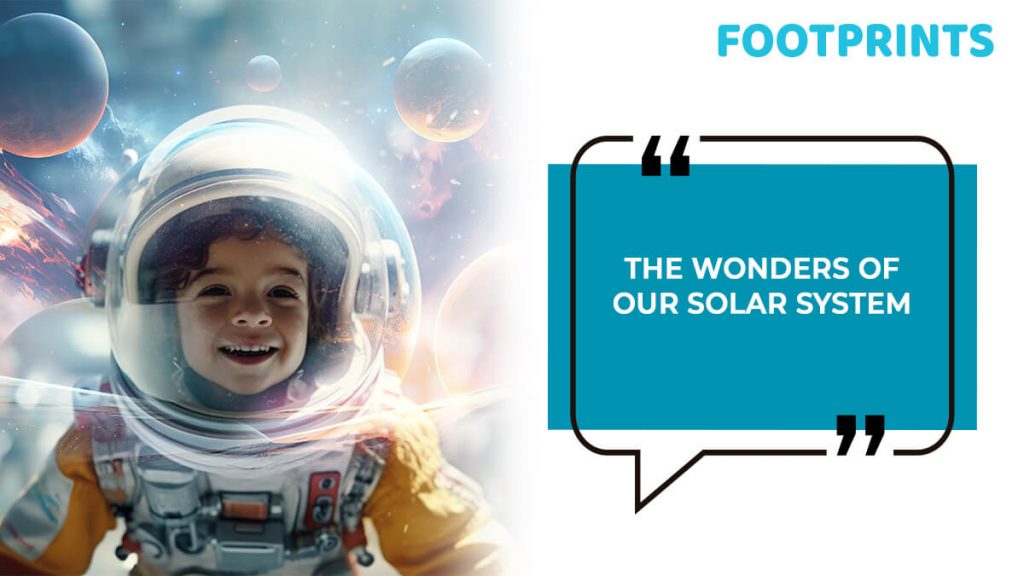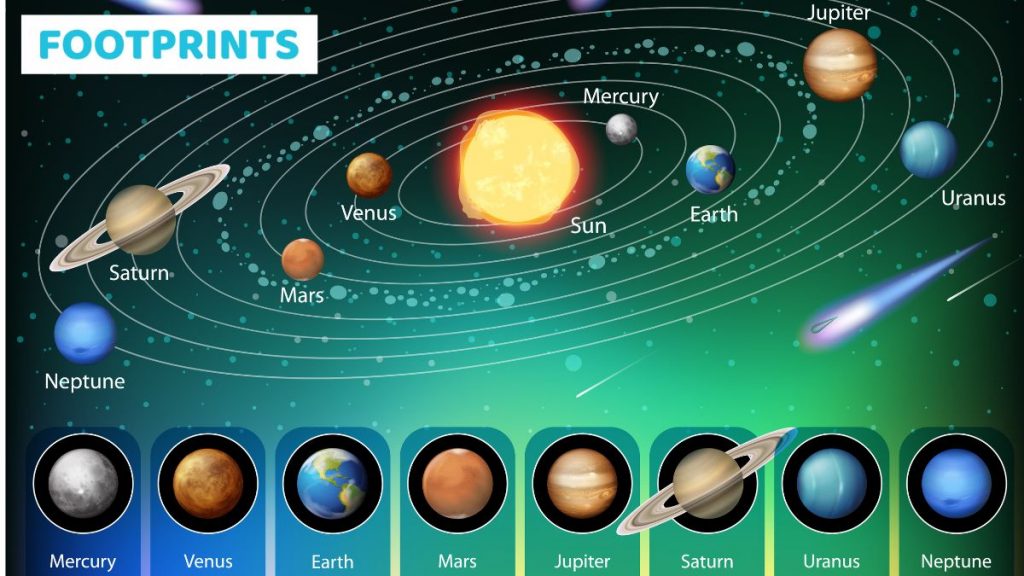

Welcome to the fascinating world of our solar system! As parents, we are responsible for giving our children the knowledge and tools to explore and understand the universe’s wonders. One such important aspect is introducing preschoolers to the names of planets. In this blog post, we will delve into the intriguing concept of our solar system and share some ways Preschool and Daycare can follow to educate children about the Solar system, explain what a world is, and discuss why children must learn about planets early on. We will also provide you with a comprehensive list of planets in our solar system and share some exciting facts that will capture the imagination of your little ones. So, let’s embark on this educational journey together and discover the marvels of our solar system, igniting a lifelong curiosity about space in your preschoolers. Buckle up as we take off into the vastness of the universe.!
What is Our Solar System?
Our solar system is a vast collection of celestial bodies consisting of a central star, the Sun, and various objects that orbit around it. These objects include planets, moons, asteroids, comets, and more. The solar system is in the Milky Way galaxy and is just one of many systems within the universe. Teaching preschoolers about our solar system helps lay the foundation for their understanding of the world beyond Earth.

The Importance of Learning Planets Early
Learning about planets at a young age is crucial for several reasons. Firstly, it introduces children to the concept of space and expands their knowledge of the world beyond what they see daily. Secondly, it helps develop their cognitive skills, such as memory and observational abilities. Understanding the names and characteristics of planets can also improve their language and communication skills. Finally, learning about planets sparks curiosity and encourages children to ask questions, fostering a love for learning.
Introducing Preschoolers to the Planets: A Comprehensive List
Planets in our solar system are unique, each with unique qualities. Getting preschoolers started with learning the names of these planets is a fantastic beginning. Mercury, Venus, Earth, Mars, Jupiter, Saturn, Uranus, and Neptune are on the list. And let me tell you, each is different in size, what they’re made of, and how far they are from the Sun. To teach preschoolers about these planets, we can make it fun with interactive activities, use excellent visual aids, and tell captivating stories. It’s like taking them on a thrilling cosmic adventure right from the comfort of your home or classroom!
Names of Planets in Our Solar System
1. Mercury – The Swift Messenger:
Mercury, the closest planet to the Sun, is a speedy little world. It whizzes around the Sun faster than any other planet, completing an orbit in 88 Earth days. Despite its small size, Mercury boasts extreme temperatures due to its proximity to the Sun, ranging from scorching hot to cold.
2. Venus – The Morning and Evening Star:
Venus is often visible from Earth and is known as the “morning star” or “evening star.” It’s a rocky planet similar in size to Earth but experiences a thick, toxic atmosphere that creates a greenhouse effect, making it the hottest planet in our solar system.
3. Earth – Our Beautiful Blue Planet:
Ah, our home! Earth is a vibrant, blue and green orb teeming with life. It’s the only planet known to support life and has a diverse range of ecosystems, from lush rainforests to vast oceans.
4. Mars – The Red Planet:
Mars, often called the “Red Planet” due to its reddish hue, has fascinated humanity for centuries. It’s a rocky world with a thin atmosphere and unique surface features, including towering volcanoes and a canyon system that dwarfs the Grand Canyon on Earth.
5. Jupiter – The Giant Gas Ball:
Jupiter is the largest planet in our solar system, a true giant! Its iconic feature is the Great Red Spot, a colossal storm that has raged for centuries. Jupiter has a whopping number of 79 known moons, the most in our solar system.
6. Saturn – The Ringed Wonder:
Saturn, with its breathtaking ring system, is a sight to behold. These rings, made of ice particles and debris, make Saturn one of the most visually stunning planets. It also has a remarkable hexagonal cloud pattern at its North Pole.
7. Uranus – The Tilted Ice Giant:
Uranus is an intriguing ice giant, tilted on its side, giving it a distinct appearance. It’s an icy world with a faint ring system and a total of 27 known moons.
8. Neptune – The Blue Giant:
Neptune is a vibrant blue-hued giant, the farthest planet from the Sun. It experiences extreme winds, some of the fastest in our solar system, reaching speeds over 1,200 miles per hour.
Fascinating Facts About Our Planetary Neighbors
Beyond just knowing the names of planets, preschoolers can be amazed by interesting facts about each one. For example, Mercury is the closest planet to the Sun and has extreme temperature variations. Venus, often called Earth’s twin, has a thick atmosphere that traps heat. Earth, our home planet, is the only known planet to support life. Mars is often called the “Red Planet” due to its rusty appearance. Jupiter is the largest planet, while Saturn is known for its remarkable rings. Uranus and Neptune, the outermost planets, are ice giants with unique features. Sharing these facts with preschoolers will spark their imagination and curiosity.
Sparking Curiosity: How Learning About Planets Inspires Preschoolers
Teaching preschoolers about planets gives them knowledge and ignites their curiosity about the universe. It opens opportunities for further exploration, such as learning about space exploration missions, astronauts, and the possibilities of future space travel. Engaging in activities like stargazing, creating planet-themed crafts, and watching educational videos can further enhance their interest and understanding. Encouraging questions and supporting their exploration helps nurture their natural curiosity, which can lead to a lifelong love for science and discovery.
At Footprints Play School, we are committed to the holistic development of children. By introducing preschoolers to the names of planets and sharing captivating information about each one, we can inspire a sense of wonder and curiosity about our vast solar system. This early exposure lays the foundation for future learning and fosters a lifelong love for space exploration and scientific discovery.
Aditya brings over ten years of expertise as a Senior Marketing Strategist. He’s an expert at developing captivating marketing tactics that regularly provide excellent outcomes. His innovative strategies have demonstrated a track record of increasing organizational reach and engagement, showcasing his extensive knowledge of the contemporary marketing landscape.

